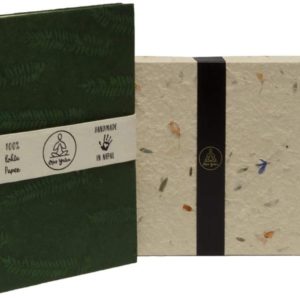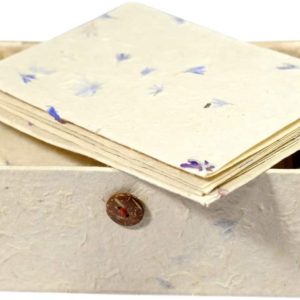Lokta Paper Production Process:
The vernacular term “Lokta Bush” is a derivative of two species of the Daphne bush, botanically as Daphne bholua and Daphne papyracea. A unique, plant with amazing qualities, the Lokta bushes are harvested due to their long, self-adhesive fibres which removes the need for additional chemicals used to ensure that the fibres to stick to one another.
An exquisite feature for paper making as the pulp created from this generates strong, durable paper. Additionally lokta bushes naturally regenerate rapidly due to their cut, without which the plant would rot during the monsoon season and grow to heights of 4-5 meters within 5–7 years.
Growing wildly and in abundance at altitudes of 6500 to 9500 feet (2000 to 3000 metres), Lokta bushes cover more than a million hectares of protected areas (national parks, reserves, conservation areas) in 55 districts of Nepal close to Mount Everest.
There are three main steps in the lokta paper manufacturing process:
1) Harvesting the fibres
- The bark of lokta bushes is harvested by hand without destroying the plants ability to reproduce.
- Once harvested it is carried from the mountains back to the village where the papermakers wash it in the stream.
2) Processing The Paper Pulp
- The inner bark is put into large oil drums and then boiled.
- Once the has been bark softened it is washed and cut into small pieces and then cooked again.
- The soft, cooked bark is placed on a flat stone and beaten to a fine pulp with wooden mallets.
- Water is then mixed with the pulp to form a homogeneous emulsion.
- The whole process is carried out by hand, as there is no electricity in the villages.
3) Producing paper from the pulp
- When the pulp is ready, it is packaged and sent to a village close to Kathmandu.
- The pulp mixture is then poured over fine cotton mesh screens that floats on a pool of water to be diluted again.
- The frame is gently shaken to spread the pulp out evenly before it is set to dry in the hot Nepalese sun.
- Once the mixture has dried, the sheet of paper is peeled off the frames and ready for manufacturing.
Once lokta paper has been produced it can last for millenniums! Approximately 2000–3500 years!



